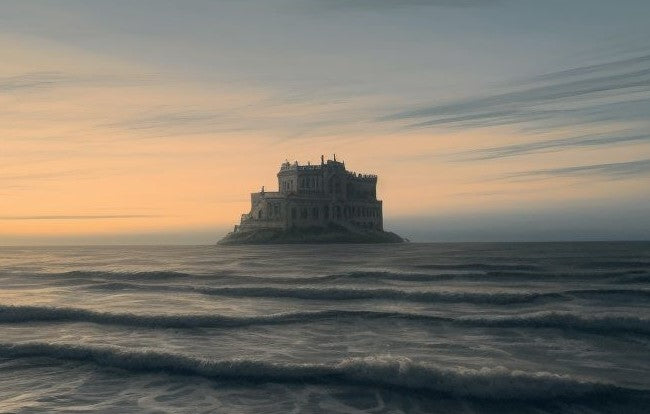In the heart of England, nestled by the sea, lay the picturesque city of Utterwick. Known for its charming cottages, bustling markets, and the grand Museum of Art and Antiquities, Utterwick was a city that thrived on its connection with the sea. The museum, a majestic structure, was perched atop a large outcrop of granite, a testament to the city's rich cultural heritage.
However, the year 1848 brought with it a day that would forever change the course of Utterwick's history. The Great Storm of 1848, as it came to be known, was a tempest of such magnitude that it shook the very foundations of the city. The storm surge was monstrous, swallowing up the city with an insatiable fury. Thousands of lives were lost to the sea, their cries echoing in the howling wind.
Amidst the chaos and destruction, one structure stood resolute against the storm - the Museum of Art and Antiquities. The granite outcrop on which it was sited withstood the onslaught, and the museum remained unscathed. As the waters receded, the outcrop emerged as an island, a solitary sentinel amidst the devastation. It was henceforth known as Museum Island.
The city of Utterwick, however, was not so fortunate. The storm had reduced it to a ghastly skeleton, its once vibrant streets now silent and desolate. The city remained submerged, a haunting reminder of the horrors of that fateful day. The decision was made not to rebuild, leaving Utterwick to rest beneath the waves, a ghost city forever silenced by the storm.
In the aftermath of the storm, the Museum of Art and Antiquities took on a new role. It became a sanctuary, a beacon of hope amidst the despair. Over time, it also became a retreat for creative artists from around the world. Drawn by the museum's history and the inspiring resilience of Museum Island, these artists found solace and inspiration amidst the ruins.
The Museum of Art and Antiquities became a hub of innovation and creativity. Artists from different disciplines and cultures came together, their diverse perspectives and experiences breathing new life into the museum. The art created on Museum Island was unique, born out of tragedy but imbued with hope and resilience.
The Great Storm of 1848 changed Utterwick forever. The city was lost, but its spirit lived on in the Museum of Art and Antiquities. The museum, once a symbol of the city's past, became a beacon of its future, a testament to the indomitable spirit of its people and the transformative power of art.
And so, the story of Utterwick continues, a tale of resilience and rebirth, of tragedy and triumph, and of the enduring power of creativity and hope. The Museum of Art and Antiquities stands tall on Museum Island, a reminder of the past and a beacon for the future. The city of Utterwick may lie beneath the waves, but its legacy lives on, a testament to the enduring spirit of humanity.

